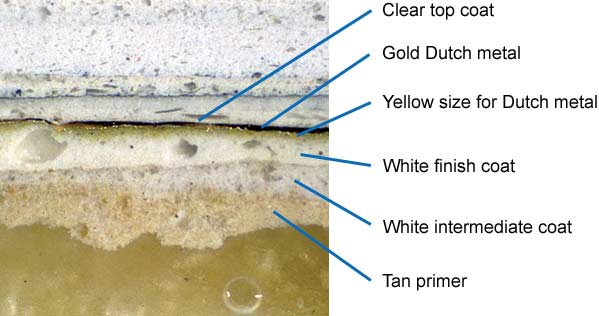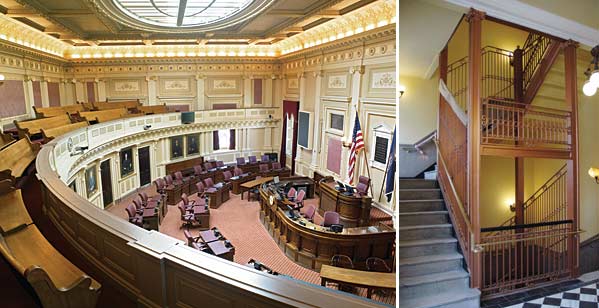A Revered Jeffersonian Landmark Renewed
Extending south
The single largest design decision facing the project team was where to build the 27,000-square-foot addition, which would provide a public entrance and visitor center, include additional meeting spaces for the legislature, and provide a café and other amenities. According to Schaar, state representatives were adamant that no major structure be added to Capitol Square. Therefore, the client first suggested a small, detached entry pavilion on the north side of the building, through which the public would descend to an underground visitor center extending under the original structure. From here, the public could ascend into Jefferson's capitol.
But such a scheme would have required underpinning-incrementally removing existing soil beneath bearing walls and replacing it with structural elements. This sequential process can result in nonuniform shifts in the foundations and can subsequently lead to damage to the building fabric above. "Underpinning represents significant risk," says Mettam. It is also a very expensive process. Entering the complex from east and west would have required similar structural gymnastics.
|
|
Aware of underpinning's associated risks and costs, Skarmeas proposed a below-ground visitor center extending from an entrance at the bottom of the hill, at the southern edge of Capitol Square. Visitors would travel through gradually ascending spaces to a rotunda connecting the extension to the original building. The scheme was consistent with the original architect's intention. "Jefferson designed the building to be a temple on the hill, to be viewed and approached from the riverbank. Everything flows from that," explains Skarmeas.
Although such a scheme would require no underpinning, engineers needed to support the original foundation while the immediately adjacent area was excavated. URS Corporation's geotechnical division tested the soil and predicted its behavior, and Silman Associates analyzed stresses the might develop in the building itself. "URS was looking at the bowl of Jell-O, and we were looking at what was sitting on top of it," says Mettam.
The two firms collaborated with the rest of the design team to develop a safe and effective way to dig next to the historic landmark. First, they had to improve the soil along the north edge of the excavation site, adjacent to the existing foundation wall and under the portico steps. They decided on a process called jet grouting that uses a drilling rod to insert engineered grout slurry into the ground and thoroughly mix it with the soil. With this technique, contractors created columns of stable, solidified soil extending 21 feet below grade. In addition, they installed ports adjacent to all of the portico's perimeter columns so that compensation grouting could be injected into the soil directly beneath the footings if the historic foundation needed to be releveled at any time.
|
|
Subsequently, they built a diaphragm to the south of the jet grouting area. Also known as a slurry wall, it relies on the slurry trench technique, in which short, discontinuous trench sections are excavated and filled with a mudlike substance that maintains the form of the trench and, therefore, the stability of the surrounding soil, but does not harden. A cage of reinforcing steel is dropped into each section, and concrete is poured. The heavier concrete displaces the slurry and cures. The process is repeated for the intervening sections in order to create a continuous retention wall.
As excavation work progressed, the contractor temporarily anchored this wall with a system of tiebacks grouted into stable soil well beyond the excavation's zone of influence. Once the framing structure of the extension was completed, they released the tension on the tiebacks.
During foundation and site work, a real-time instrumentation system monitored building movement in three dimensions while inclinometers measured lateral movement in the diaphragm wall and the jet grouting area. The data was collected, processed, and disseminated online so that team members could access it remotely. In particular, engineers closely watched for differences in the behavior of adjacent areas. "The real risk of damage is not from absolute values of settlement, but from differential settlement," says Mettam. Fortunately, movement stayed within acceptable limits.











